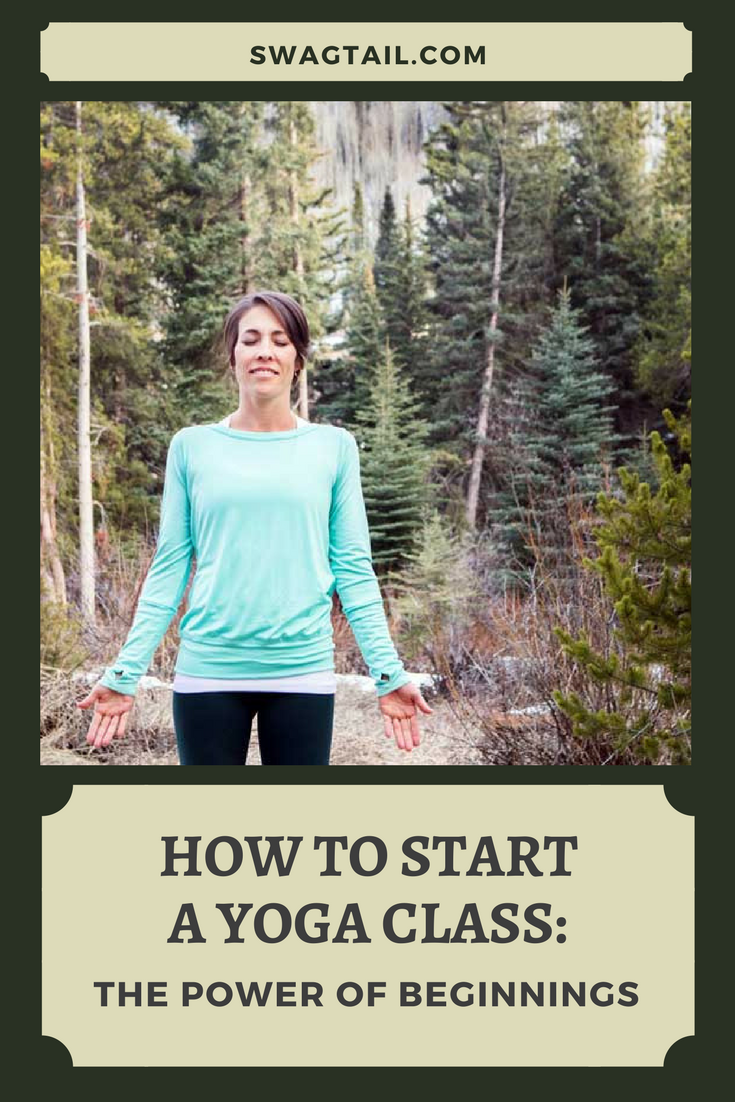
Many conversations today are focused on the HOW-TOs of yoga, such as how to build a yoga business, how to relate to students, or how to create a sequence of poses with purpose and safety. While this article is titled “how to start a yoga class,” we’re really going to dive into the importance of beginnings, and why it’s essential to leverage the newness in those time periods to provide maximum impact for your students.
Thanks to the book WHEN, by Daniel Pink, the author uncovers the hidden science of timing. Pink explores a wide array of topics, and shares enough scientific data to make your eyes go cross. To simplify matters, I’ll share some of his notes below and add some very specific applications and insights of timing for the yoga world.
Photo Credit: Bex White
THE IMPORTANCE OF TIMING
The Earth spins on its axis consistently, providing us periods of sunlight and darkness within each full rotation. As humans, we have divided those periods of light and dark into hours. We then further divide and configure those time increments based our priorities. Similarly, when teaching yoga, we are given a set amounts of minutes to work with in order to bring about a transformation for our students.
A basic teacher training program lays the groundwork to manage such timing. You learn when to place poses within a sequence to warm up the body, and then how to prepare it for more difficult postures. You also discover the necessary time needed to counterbalance challenging work and restore an overall sense of balance to the body.
There is power in timing–and it goes way beyond the placement of postures in a sequence. This is the first of three blog posts that will look at the elements of timing–from beginnings to middles to endings–so that you can lead smarter, better, and more purposeful yoga classes within any time limit.
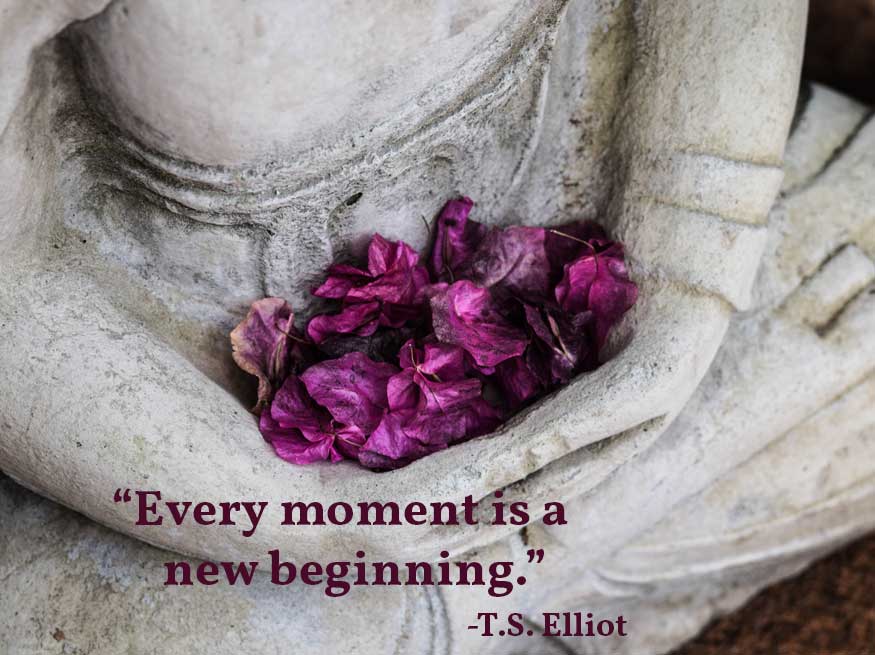
Photo Credit: Chris Ensey
THE POWER OF BEGINNINGS
Starts matter because they set the tone for what is to come. This is incredibly true in the realm of yoga. Research shows that we, as humans, use temporal landmarks to navigate time. Just as we would use a physical landmark to determine our physical location (like the gas station is a block from my house), we use indicators to guide our lives.
These temporal landmarks are unique to us, in which they stand out from other routine (and often boring) days. Some of these dates are recognized throughout society, such as New Year’s Day or the 4th of July. Some are more personal, such as your birthday, the start of a new career, or an anniversary.
Temporal landmarks help us start something new, or they give us the courage and confidence to start something familiar yet again with a new perspective.
Temporal landmarks help you to:
- Take a big picture view of your life
- Focus on achieving your goals
- Think more slowly
- Guide your life with careful deliberation
- Make better decisions
- Decipher meaning in your experiences
- Take inspired action
- Stick to a new habit
- And much more!
As a side note here, that is why we have Fresh Start Sundays here at Swagtail. Sunday is a recognized temporal landmark that gives you a chance to leave your old self in the past, and start over for the new week ahead. With new tools and insights in hand, you can then approach the next 7 days with more clarity, focus, and joy.
While yoga classes are held every day of the week (not just on Sundays), research has also shown that you can infuse an ordinary day with personal meaning to activate a sense of starting anew. Essentially, you invite students to do this each time they start a yoga class.
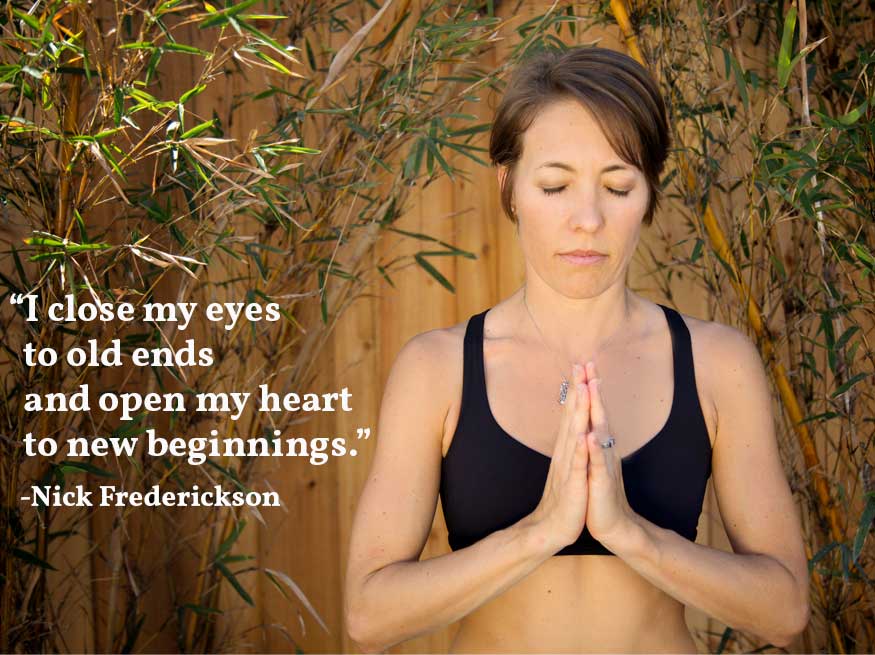
Photo Credit: Ember and Earth Photography
THE REAL BEGINNING OF A YOGA CLASS
While you might like to think class starts when you’ve finished checking everyone in, and the door to the yoga room officially closes, the reality is that it starts well before that for your students. Thus, the timing of your actions can be a powerful way in which you facilitate a feeling of belongingness for those in your class. This can enhance their thoughts and emotions of you, and of yoga as a whole. Plus, it can be a valuable building block to keep your yoga business growing.
Here are some simple ways you can connect with your students BEFORE you begin to lead the class:
Arrive early
This way you can be organized, confident and centered before students show up.
Clear the yoga space
Ring a gong or singing bell to clear the area with sound, or light a sage smudge stick to alleviate smells.
Adjust the light
What mood do you want to set with class? Do you want to get the class energized? Do you want them calm from the get-go? The amount of light you set initially will set the tone without even saying a word.
Select the sound
Again, you decide whether music will be playing or not when students arrive. This will give an indicator of your energy levels, as well as your intentions for theirs. If you choose to play music, make sure it suits the time of day, type of class, and focus for your class. By doing this, you will create a sense of congruence with you and your students before you even open your mouth. (For example: playing rap before a yin class might give off the wrong signal before you start your sequence).
Ask Questions
When you get to know your students before you see their bodies in action, they can sense that you care. You can also glean any information about injuries or practice history, especially if they are new to the studio.
Offer your time for conversation
Many locations have an employee or other staff members (or even a yogi on trade) checking in students as they arrive. If this is the case, you can then offer your presence to your students in a more personable manner. Maybe they have questions about their practice, or they just want to share about their lives. The willingness to listen is one of the most important traits of leaders, and it’s a great way to build a stronger bond with your students before you start a yoga class.
Start class on time
When you do this, you show respect for the people in your class, and the time they have carved out to be here.

Photo Credit: Alp Studio
5 WAYS TO START A YOGA CLASS
BEGIN IN STILLNESS
Purpose: Your students have full days, and often busy lives. Carving out a few minutes of silence can allow them to process thoughts of the past and begin to transition into the moment. It can also be the space in which new thoughts arise. Above all, it gives them a chance to connect with their best selves without the distractions and noise of anything else.
Postures: You can start in a pose like:
- Savasana (there’s nothing better than resting like the dead from the beginning)
- Balasana (let the connection of the forehead stimulate the connection to the third eye)
- Sukhasana (use the groundedness of the sitting bones and the length of the spine to set the tone)
Ideas to implement: While there are endless ways to implement stillness, here are a few to try out:
- Notify your students when they walk in that the room will be silent until you start class. This will invite more stillness in for those who arrive early and might enjoy the reprieve.
- Announce your intention for stillness, perhaps combining it with a short reading about the power of silence, before inviting them to be still in their bodies.
- Have soothing ocean sounds in the background. Sometimes absolute stillness can be challenging for those who have been around lots of stimuli all day. The sound of ocean waves is a calming noise, and can subconsciously facilitate a deeper breath and relaxation response in the body. This greater sense of ease can prepare them mentally for any physical exertion that is to come.
PRANAYAMA
Purpose: Using regulated breathing techniques is a focused way to begin moving the prana, or energy, throughout one’s being. When you instruct students to focus on the breath, they are invited into a deeper awareness of their current mental and physical state. This is constantly changing, so tuning in to what is going on in that particular moment can create more clarity about how they could best approach their practice.
Postures: Again, you can infuse pranayama into any posture taken. Yet, a long, tall spine can help facilitate a deeper breath. Please select a seated position that matches the duration of time you expect your students to breathe there. Said another way, if you want to have an extended pranayama portion at the start a yoga class, select an easier posture (or one students can sustain with more physical ease). Try:
- Sukhasana
- Virasana or Vajrasana
- Padmasana
Ideas to implement: The ideas suggested below are just that–suggestions. You want to make sure the breath count used by students is not too easy, nor too difficult. Perhaps invite them to find a count that suits them, if what you are instructing does not fit their needs.
- Breathe in and out fully, without any conscious changes to the breath at first. Many times we attempt to force change in our lives. Embracing what is, just through the breath, invites a more organic approach to the breath and the body movement.
- 3 count inhale, 5 count exhale (or any ratio where exhale is longer than inhale). This is great for an evening practice, to begin to calm the body from the events of the day.
- Use Samavritti Pranayama, in which the inhale, exhale, and retentions are all the same length. For example, you could inhale to a count of five, hold for a count of five, exhale for a count of five, and hold the breath out of a count of five.
USE OM, A MANTRA, OR OTHER INVOCATION
Purpose: The seed mantra,Om, is made up of three syllables, A, U, and M, and phonetically translates to, “aaah,” “oooh,” and “mmm.” This represents all aspects of sound and creation, and invites students to connect with all aspects of themselves, as well as the vastness of the Universe. This can be used alone to harmonize the group. Or, it can be combined with an invocation to call on strength, guidance, or support from someone or something.
Postures: Use any position in which the spine is upright, such as:
- Sukhasana
- Vajrasana
- Tadasana
Ideas to implement:
- Chant OM three times together as a group. Never underestimate the power of this simple exercise.
- Play the Gyatri Mantra, by Deva Premal (one of my favorite versions): This mantra invokes the illumination of the mind, and might not offend anyone with particular religious ties since it does not invoke a god or goddess. If you feel brave, perhaps you begin to teach it to your class, and you can all sing it together over time.
- Research the invocation to Patanjali used both in the Iyengar and Astanga traditions. You might even check out the one used in more recent lineage of Anusara. Perhaps play each of these before class, and translate them for your students.
DHARMA TALK, OR INSPIRATIONAL READING
 Purpose: While a dharma talk refers to a short discussion about buddhist philosophy, you can take the first few minutes of class (5-15 min, depending on overall class length) to share your intentions of class theme with your students. This also allows their minds to chew on some philosophical concepts while engaging the body in their practice.
Purpose: While a dharma talk refers to a short discussion about buddhist philosophy, you can take the first few minutes of class (5-15 min, depending on overall class length) to share your intentions of class theme with your students. This also allows their minds to chew on some philosophical concepts while engaging the body in their practice.
Postures: Any seated posture will work, as you want the group to be upright and engaged to listen.
Ideas to implement:
- Share one of your favorite blog articles (such as any of the class themes on this site, or from others that connect with you on a personal level).
- Read some poetry, such as that by the Persian poet, Jami.
- Cross-reference yoga philosophy with other material, such as The Four Agreements, by Don Miguel Ruiz or The Power of Now, by Eckhart Tolle
OPEN THE SIDE BODY
Purpose: One of my favorite yoga classes by Tiffany Cruikshank begins with a few slow stretches to open up the side body to prepare for pranayama. It’s amazing how just a bit of movement before breathing can intentionally create new sensations around the ribs and lungs. Thus, students can experience a more vibrant encounter with the breath.
Postures:
- Bananasana (yin pose): This pose is a supine version of chandrasana.
- Thread the needle: Another great pose to expose each side of the body independently.
- Balasana, with a side stretch: Take 5-10 breathes on each side, keeping the hips heavy on the heels and the forehead connected to the ground (or a block).
Ideas to implement: Use any of the three postures above, or any others that will gently guide your students into their body. This can be a fun way to mix up the practice, especially if you have the time to breathe immediately after these poses.
INFUSE BEGINNINGS INTO EACH ELEMENT OF CLASS
Midpoints of class are often the less memorable than the beginning or endings of a yoga class. Thus, you can bring the element of newness to each pose in the following ways:
- Take additional time to build each pose consciously from the foundation up (and let students know why the pose is constructed in such a way). This can shift the perspective on a familiar posture.
- Place resting poses, such as balasana or savasana, in between more active ones. This creates a brighter contrast in the body and breath as students begin a new part of a sequence, or enter a new posture. Essentially, students will get to the same feeling as they would when they start a yoga class in each shape they take throughout the class.
- Hold a pose, or a series of poses, for a minute each. This is especially true for simple poses that create the foundation for more challenging ones. Research has shown that you feel closer to your future self when thinking in smaller units of time, so use timed holds to form building blocks. This way your students can tap into their capability now, and feel less intimidated to try more challenging poses down the road.

Photo Credit: Tim Swaan
PUTTING IT TOGETHER
Timing is everything, and you have the ability to control it when you take actions to create a more poignant, memorable, and powerful yoga class for your students. This starts with the steps you take before they arrive. You also set the tone with the postures you select for the beginning of class, and how you choose to approach each sequential movement throughout the practice.
With this level of insight and leadership, what kind of beginning will you create for your students? And how will you continue to give them a fresh start, no matter where they are in their practice?
Then, over the next few months, we’ll cover other timing-related topics. This includes how to avoid getting stuck in the middle, as well as 5 tips to end a yoga class with meaning. We will also address when:
- is the best time to open a studio?
- is the best time to schedule a workshop?
- do I know I am ready for teacher training?
- to join, or leave, a studio?
- And much more!


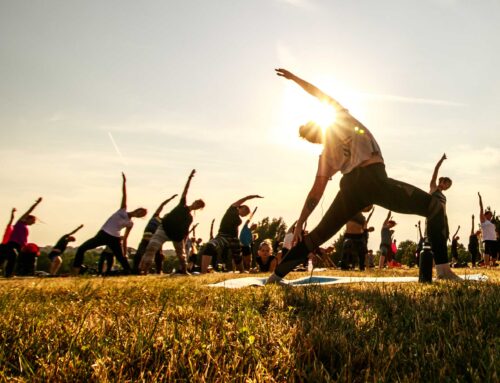

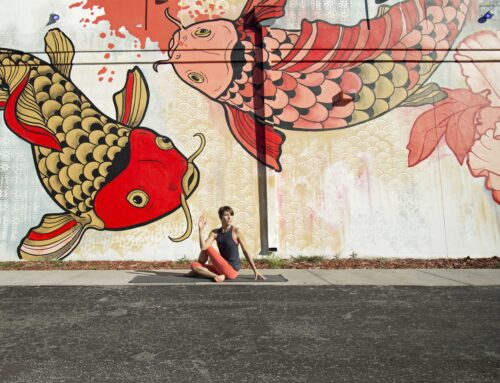

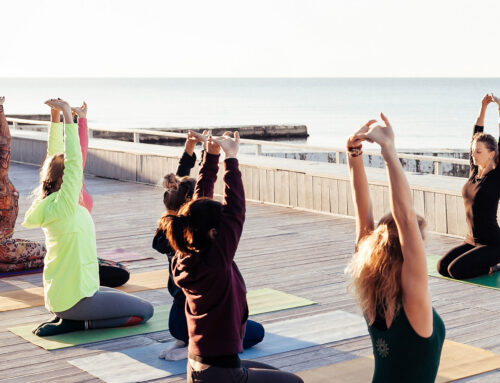

I like to start my yoga classes with three Oms and traditional.
Hi Stephy,
Thanks for sharing your style! I love the 3 OM’s … they are so powerful and uplifting!
Thank you Kym. This was very helpful. I usually find it difficult about what to say at the beginning of a yoga class. As in inviting them to their body or stillnes or any wise words. Where should I look at these things if I wanted to start my yoga class very strong.?
Thanks